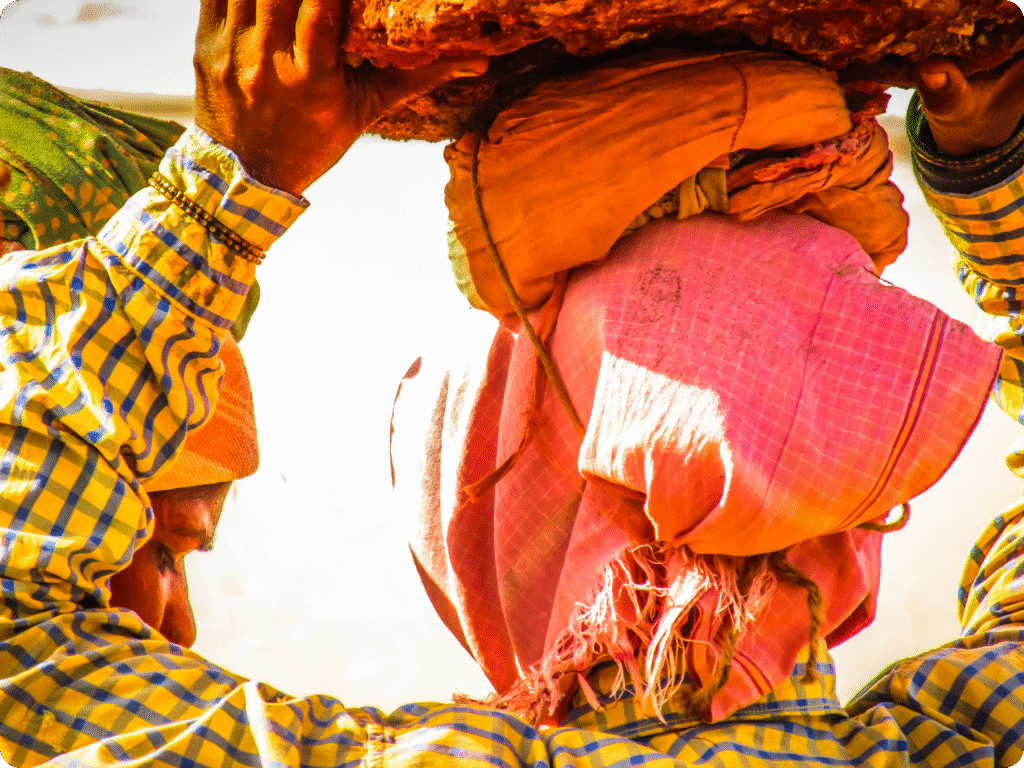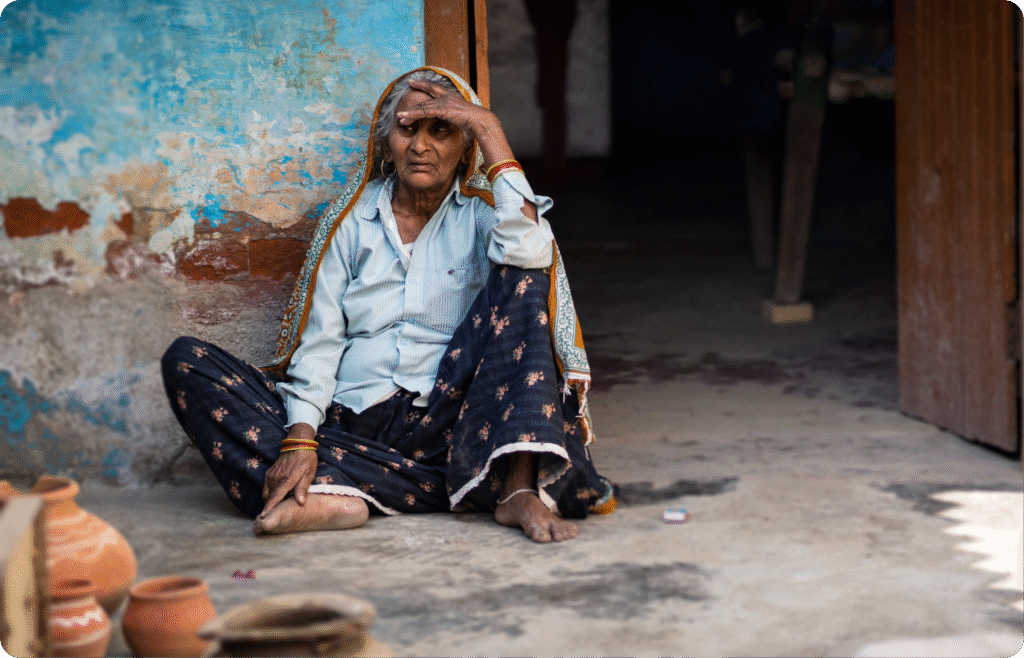With each passing year, heatwaves are becoming longer, more intense, and deadly. A comprehensive multi-city study in India reveals that around 1,116 individuals lose their lives annually due to extreme heat1. However, it’s important to recognize, that heat does not affect everyone equally. While some may experience it as a minor inconvenience, for others particularly the poor and vulnerable, it poses a serious threat to their health and survival. It is crucial to recognize and address these disparities to foster a more equitable response to the critical issue of heat crisis.
When a heatwave strikes, it’s not just about sweat and sunburn. For an elderly person living alone, a daily-wage worker, or a pregnant woman living in a house without fans, extreme heat can be life-threatening. These individuals don’t have the luxury of air-conditioned homes or the privilege of the option to rest during the hottest hours. Many live in tin-roofed homes, face frequent power cuts, work under the scorching sun, and often lack access to clean drinking water.

In India, over 90% of the workforce is part of the informal sector, and according to the International Labour Organization (ILO) the nation could lose up to 34 million full-time jobs by 20302 due to heat stress. This impact will be particularly severe in sectors such as agriculture and construction, where extreme heat reduces working hours, cuts income, and slows economic growth. Beyond the economic toll, it poses serious health risks and threatens the livelihoods of outdoor and informal workers. For them, the loss is severe. It harms their health, limits their ability to work, and deepens poverty, with little protection against rising temperatures.
What is heat stress?! And why is it a health hazard?!
Biologically, heat stress impairs the body’s inability to regulate its temperature, leading to serious health risks. It can cause debilitating heat cramps, acute dehydration, exhaustion, and in extreme cases, heatstroke, where the core body temperature exceeds 40°C. When this critical condition occurs; it puts the vital organs like the heart, kidney, and brain at dire risk of failure. People with chronic illnesses like diabetes and cardiovascular diseases face an even greater threat from heat stress, making awareness and prevention essential for safeguarding health.
Children and the elderly are particularly vulnerable to high temperatures because their bodies are less efficient at cooling due to underdeveloped or declining thermoregulation systems. India’s elderly population is projected to double by 20503, while approximately 35% of its population is currently under the age of 18. Children, with their higher surface-area-to-body-mass ratio and limited ability to communicate discomfort, are especially at risk during heatwaves.
Pregnant women also face heightened risks during periods of extreme heat. Elevated temperatures raise core body temperature, which can lead to complications and increase the chances of preterm birth, low birth weight, and conditions like pre-eclampsia. Research shows that with every 1°C rise in temperature, the risk of preterm birth escalates by 5%4. India, with one of the highest birth rates globally, is particularly vulnerable to these risks.
But vulnerability is not solely biological. It is also influenced by environmental factors. Many low-income families live in overcrowded, poorly ventilated-homes that retain heat. In urban areas, the urban heat island effect, caused by heat-absorbing concrete, asphalt, and a scarcity of trees, raises city temperatures several degrees higher than those in surrounding rural areas. With 17% of urban India living in slums5, the risks are both widespread and severe.

What Can We Do?
At a personal level, we can check on elderly neighbours, keep children hydrated, and ensure that outdoor workers receive rest, shade, and clean water. However, individual actions while a step in the right direction, are not sufficient. We need systemic change. This includes implementing Heat Action Plans, improving housing and urban planning, expanding green cover, providing cooling shelters, and ensuring labour laws for informal workers. Additionally, developing early warning systems, designing climate-resilient infrastructure, and strengthening healthcare services are essential steps toward mitigating the health risks of heat waves.
Extreme heat is not merely a weather phenomenon; it is a public health crisis and a critical issue of health equity. By raising awareness, advocating for change, and taking action, we can ensure that no one is left to fend for themselves as temperatures continue to rise.
——————————————————
This blog was authored by Dr. Somnath Panda and Sajeeth Kumar Sankar.
About the co- authors:
Dr. Somnath Panda– Somnath is a molecular biologist with a Ph.D. in Medical Microbiology, specializing in virology, genetics, and clinical research. With over five years of academic and field experience, he aims to advance research on heat stress in India, focusing on genetics and biomarker-based rapid diagnostics to alleviate public health challenges.
Sajeeth Kumar Sankar– Sajeeth is a public health researcher with a focus on environmental health, climate change, and workplace interventions. As a Project Associate at the Sri Ramachandra Institute of Higher Education and Research, he concentrates on issues related to heat stress, community engagement, and the application of research findings to real-world situations. Sajeeth is passionate about promoting equity and sustainability and is committed to making science accessible to protect vulnerable populations.
The blog post was edited slightly for factual accuracy at 6:30 pm IST on 18th July 2025
This research was funded by the NIHR (Global Health Research Centre for Non-communicable Diseases and Environmental Change) using UK international development funding from the UK Government to support global health research. The views expressed in this publication are those of the author(s) and not necessarily those of the NIHR or the UK government.






